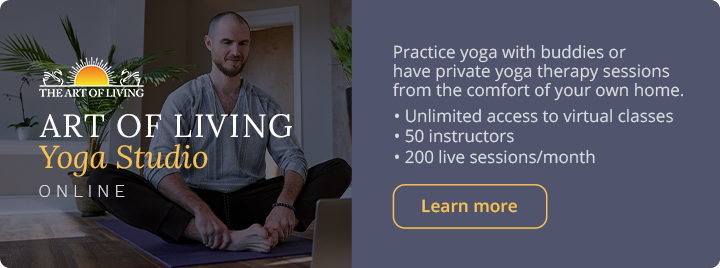Fighting off Seasonal Affective Disorder or winter blues? Here’re 5 yoga poses and easy-to-incorporate habits that help defeat SAD naturally.
Winter is upon us, which means that in many parts of the world the weather is colder, the dark descends earlier, and the coats are heavier. For many, the colder months bring on the winter blues, also known as Seasonal Affective Disorder (SAD) that occurs when sunlight hides away in the winter weather.
The phenomenon, which was only recently acknowledged in 1984, is now a scientifically validated experience. SAD is a type of seasonal depression that often begins in the fall and early winter and wanes in the spring and summer. While SAD can vary in severity depending on who it affects, common symptoms include depression, low energy, and difficulty concentrating. For people living in areas of the world that receive extremely low amounts of sunlight in the winter months, such as Seattle, Washington and parts of Alaska, SAD can be a common occurrence.
SAD (Fall/Winter) Symptoms
- Appetite changes, with increased cravings for carbohydrates
- Weight gain
- Oversleeping
- Feelings of fatigue and low energy
- Lack of interest in activity and depression
- Difficulty concentrating
Reverse SAD (Spring/Summer) Symptoms
- Insomnia
- Poor appetite, disinterest in eating
- Weight loss
- Agitation and anxiety
How yoga can help defeat SAD
The good news is that a yoga practice can help fight these symptoms no matter your seasonal cycle. The source of this seasonal disturbance is a disruption of our circadian rhythm that changes the levels of serotonin and melatonin in our bodies. Traditional therapy includes medication, light therapy, and psychotherapy.
Yoga practice is a great way to combat SAD by tapping into the mind-body connection. It is an incredible tool to reset the nervous system and help release tension and stress by increasing your serotonin levels and decreasing monoamine oxidase levels (MAO). If you have a case of the winter blues, try incorporating yoga in your day.
While a general yoga practice will help you with both anxiety and depression, you can also pick specific poses that address each challenge associated with SAD. Of course, if you believe you’re suffering from SAD, it’s always wise to consult a doctor or mental health professional.
Here are some of our favorite poses that are great for beating the winter blues and bringing a little warmth to a dreary day. These are poses to help stretch your stiff body as well as energizing and endorphin-releasing to elevate your mood. So if the cold weather is getting you down, grab your yoga mat and give these poses a short.
Cat-cow flow (Marjari asana)
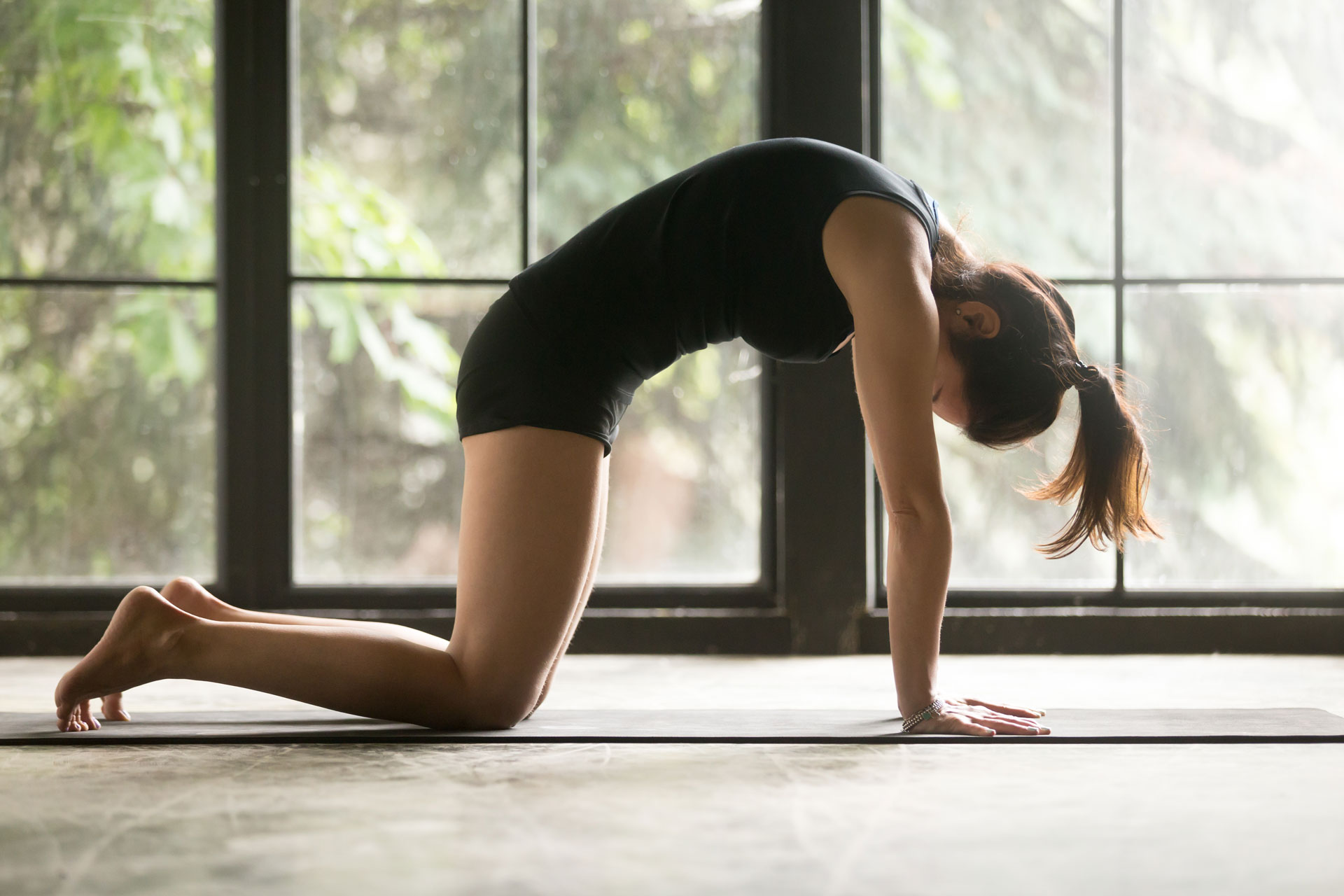
In the winter, the spine and back can feel very stiff when exposed to cold temperatures, especially if you’re not moving around as much as you normally would in warmer weather. Cat-cow flow can help release this tension in your muscles.
The cat (Marjaryasana) and cow (Bitilasana) sequence not only stretches your spine and relieves pain from prolonged sitting but also helps with stiffness in the shoulders and warms up your spine for further asana practice.
In tabletop position, evenly distribute your weight through your hands and legs. For Cat pose, exhale your belly button towards your spine and lift upwards, scooping the tailbone and allowing the chin to touch on your chest. For Cow pose, inhale and lift your sitting bones and chest toward the ceiling and allow your belly to sink towards the floor. Lift your head to look straight ahead. Do as many rounds of the two as you need to.
Standing backbend (Ardha chakrasana)
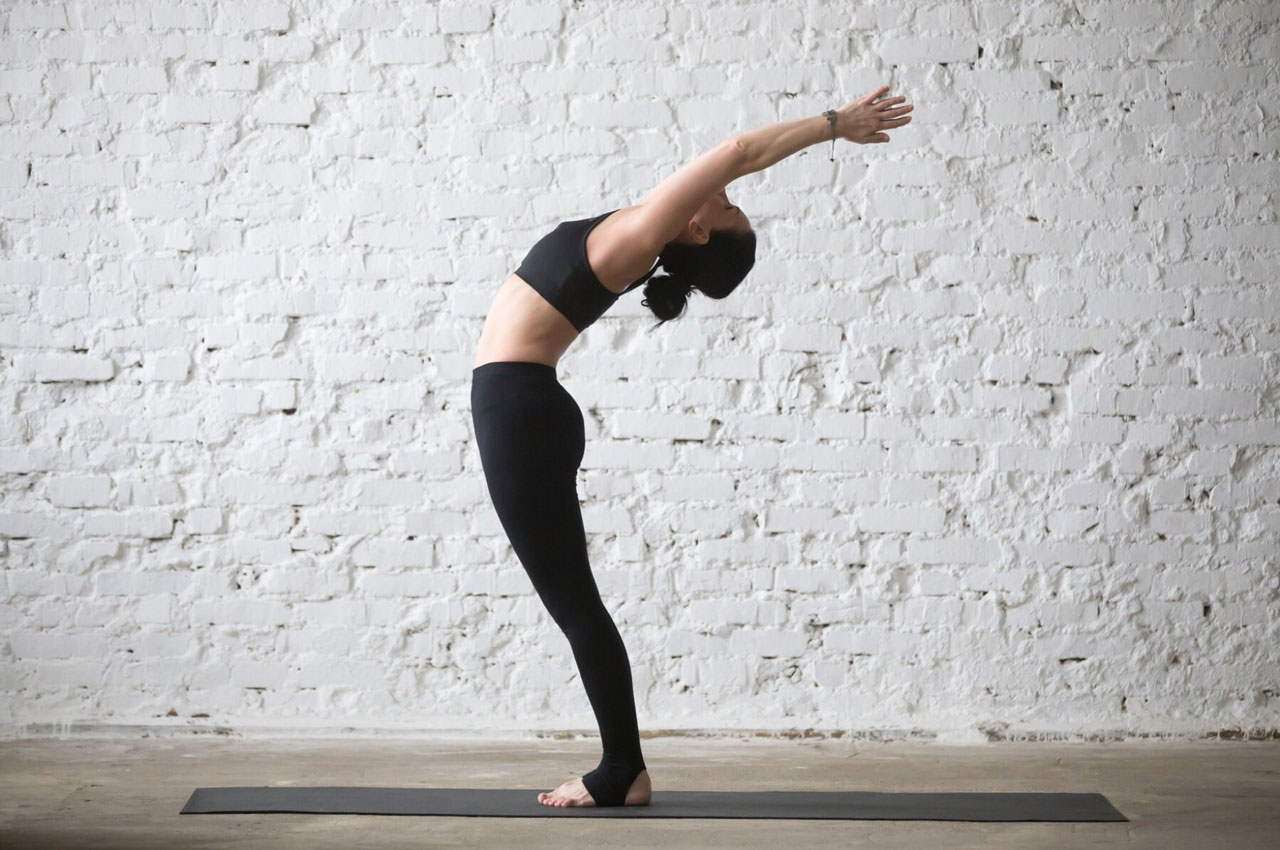
Start by standing on your mat with your feet planted strongly on the floor. Firm your glutes and raise your hands up over your head with your palms together. Push your hips forward, look backward and lift your chest up towards the sky. This pose will help open your heart and lengthen your body.
Standing forward fold (Uttanasana)
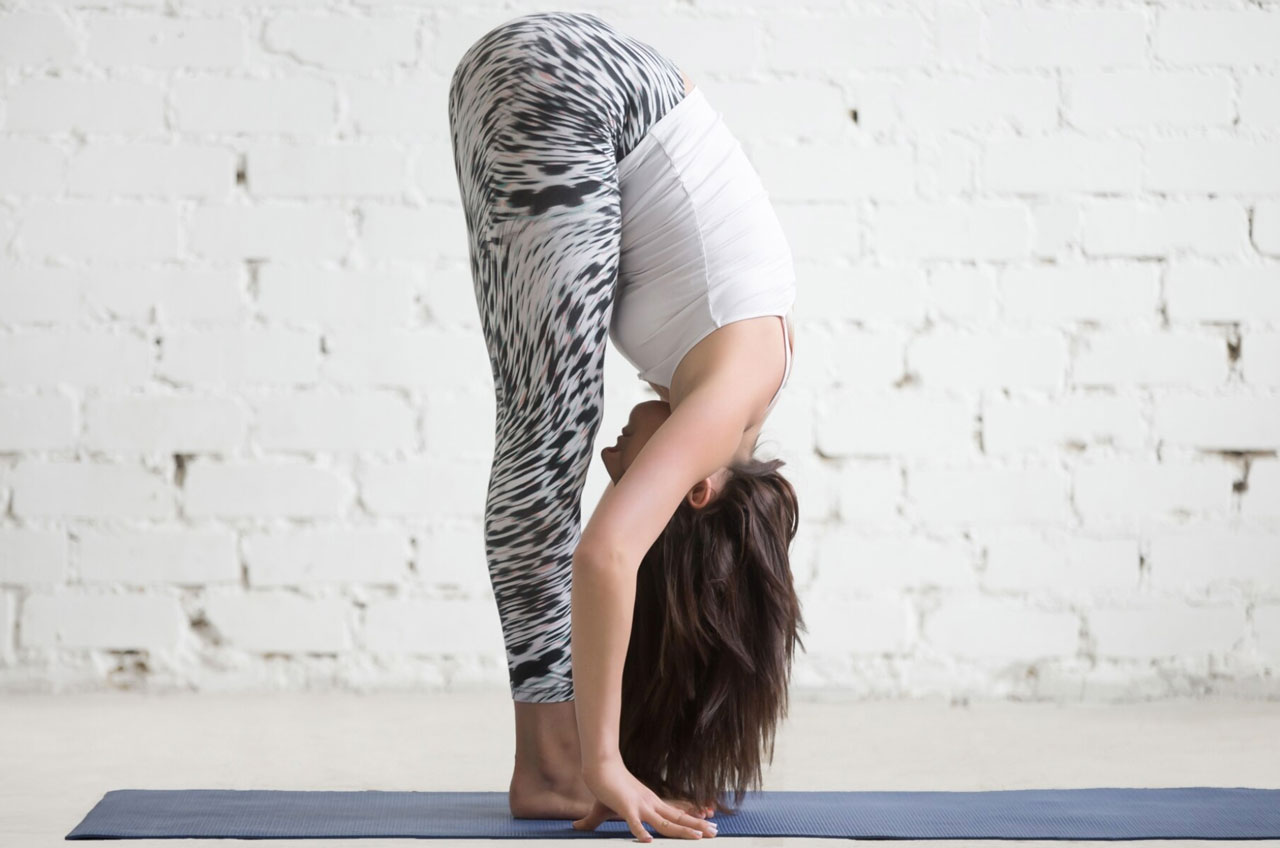
This is a gentle inversion that helps reverse blood flow (allowing more to flow toward your brain) while also relieving stiffness in the lower back, hips, and hamstrings. It can also be a mood booster for when the winter blues are getting to you.
Starting in mountain pose, hinge at the hips to fold forward. Rest your hands on the floor and let your upper body hang. Keep a slight bend in the knees and with every out-breath let yourself fold deeper. Go deeper into the pose by adding a ragdoll bind (fold the arms, holding the inside of opposite elbows) and holding it for five or more breaths.
Tree pose (Vrikshasana)
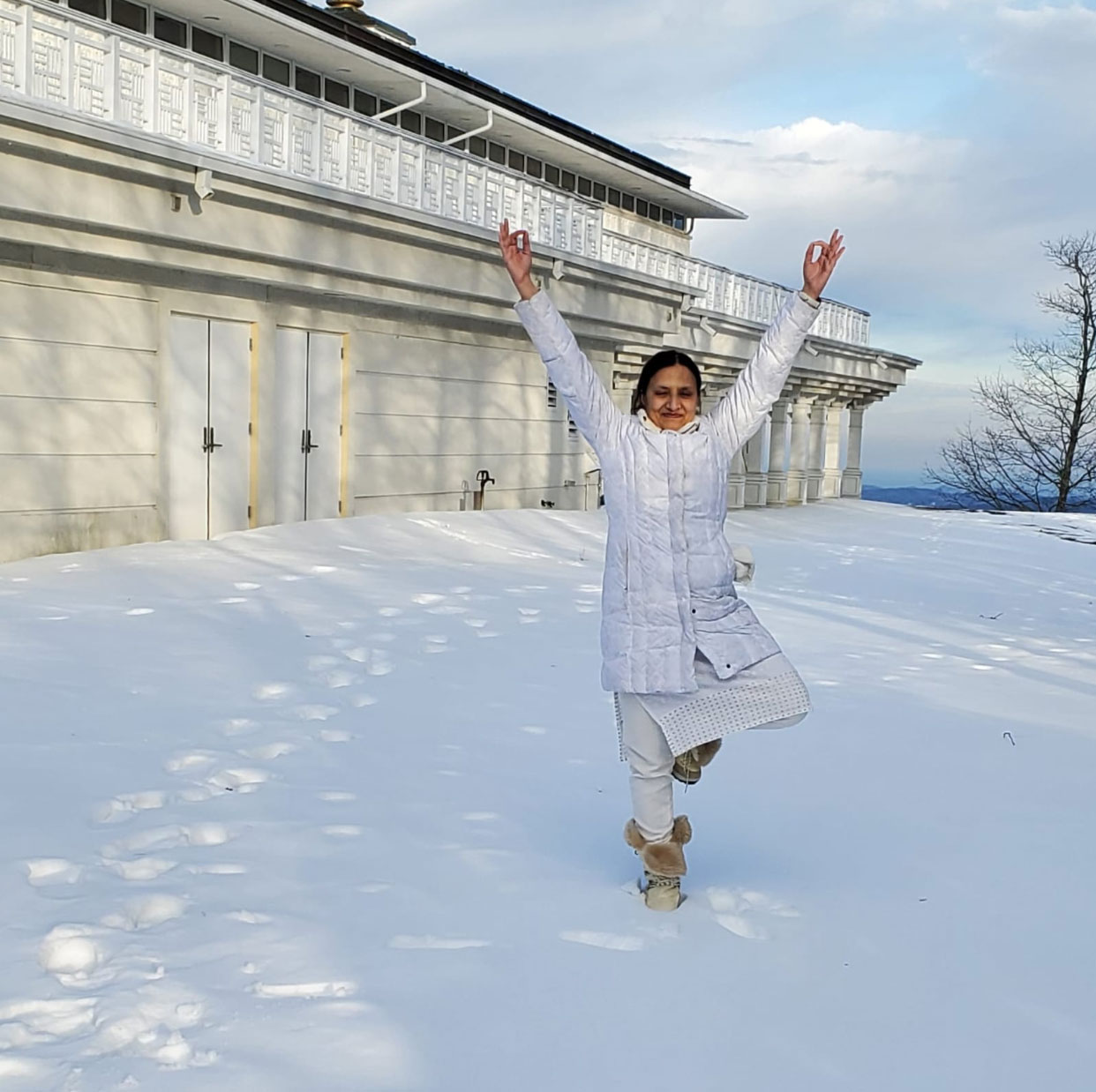
Tree pose helps with increasing concentration and improving your balance and sense of grounding.
Start in Mountain Pose, shift weight into the left leg and place the sole of the right foot on the floor, calf, or inner thigh of the supporting left leg (avoid placing the right foot on the left knee in order to protect the joints). Hold for 5-10 breaths then switch sides.
Child’s pose (Shishu asana)
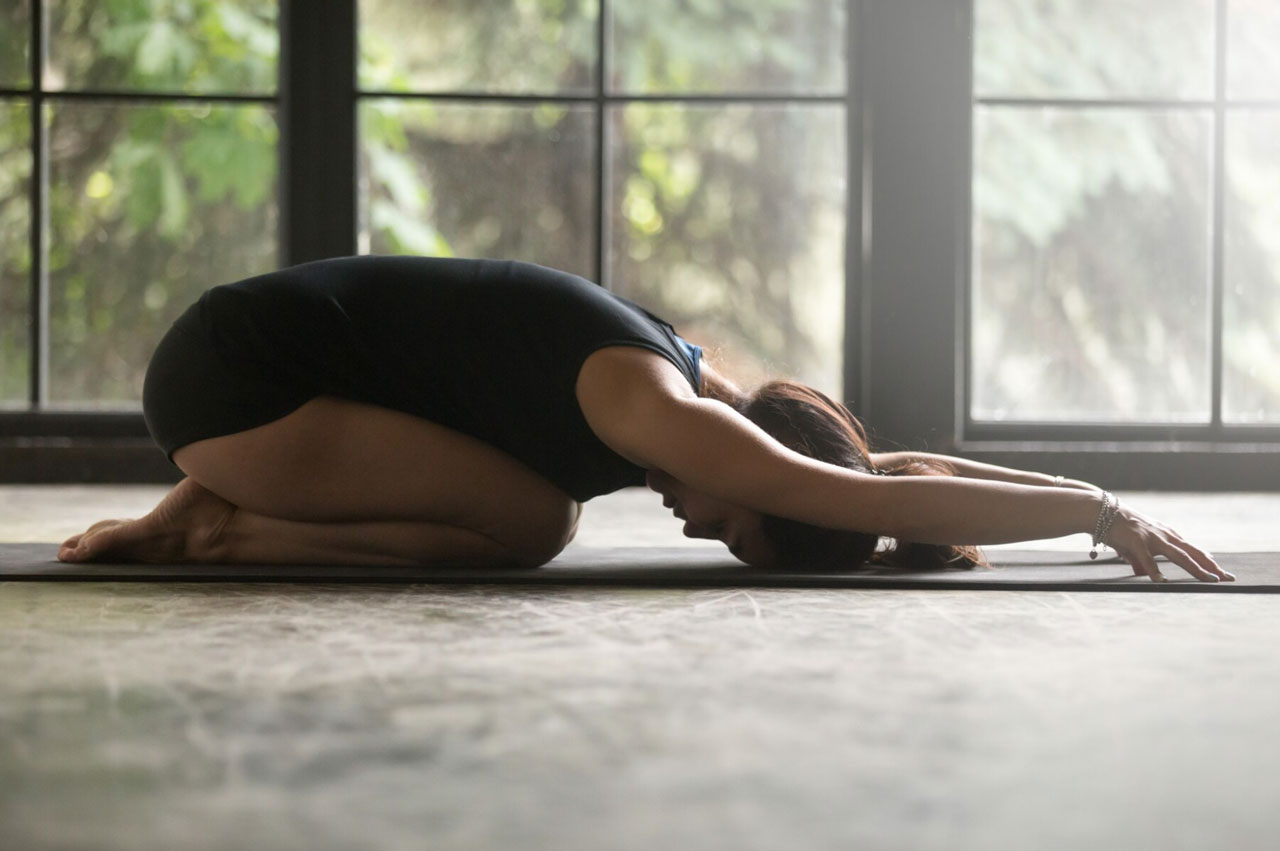
Let your body relax and reset in Child’s Pose. From all fours, sink your hips back toward your heels and lower your body towards your thighs. Reach your arms out in front of you and rest there for as long as your body needs.
Sun salutation (Surya namaskar)
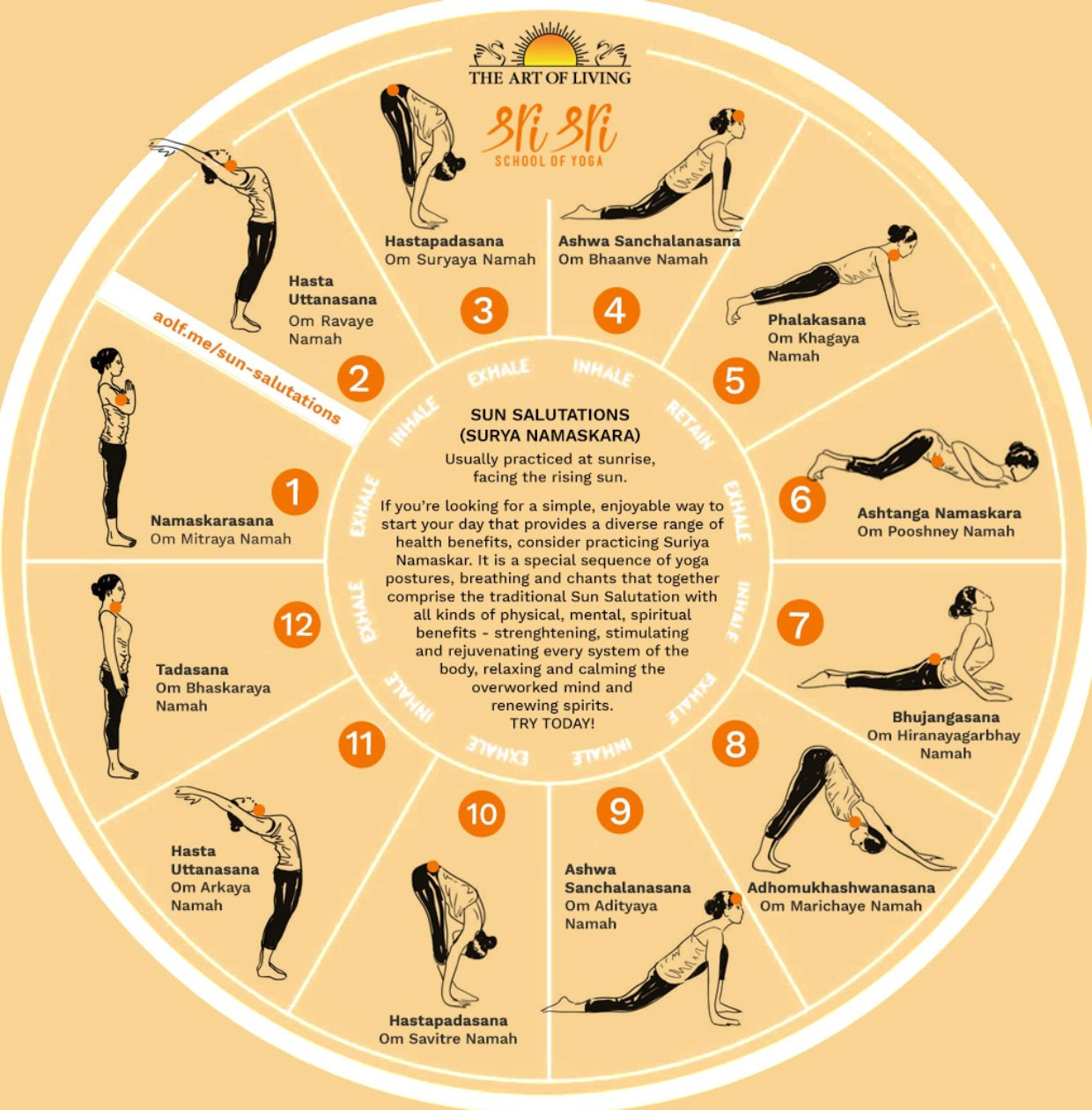
If you’re looking for a simple, enjoyable way to start your day that provides a diverse range of health benefits, consider practicing Surya Namaskar or Sun Salutation. It is a special sequence of yoga postures, breathing, and chants that together comprise the traditional Sun Salutation.
Sun salutations are so beneficial during winter. We spend a lot of time during winter indoors, sitting and not moving our bodies. This sequence is not only a great cardiovascular workout to get your heart pumping and warm up your body it also moves your spine through almost all possible ranges of motion. When you link your breath to the movements in this sequence it can help increase mindfulness and reduce anxiety and other mental stresses.
A few rounds of sun salutation could be your workout for the day or you could use it as a warm-up before moving into other poses on this list.
Download our FREE e-book on Sun Salutation: Your Full Guide to Master the Age-old Yoga Sequence
Meditate
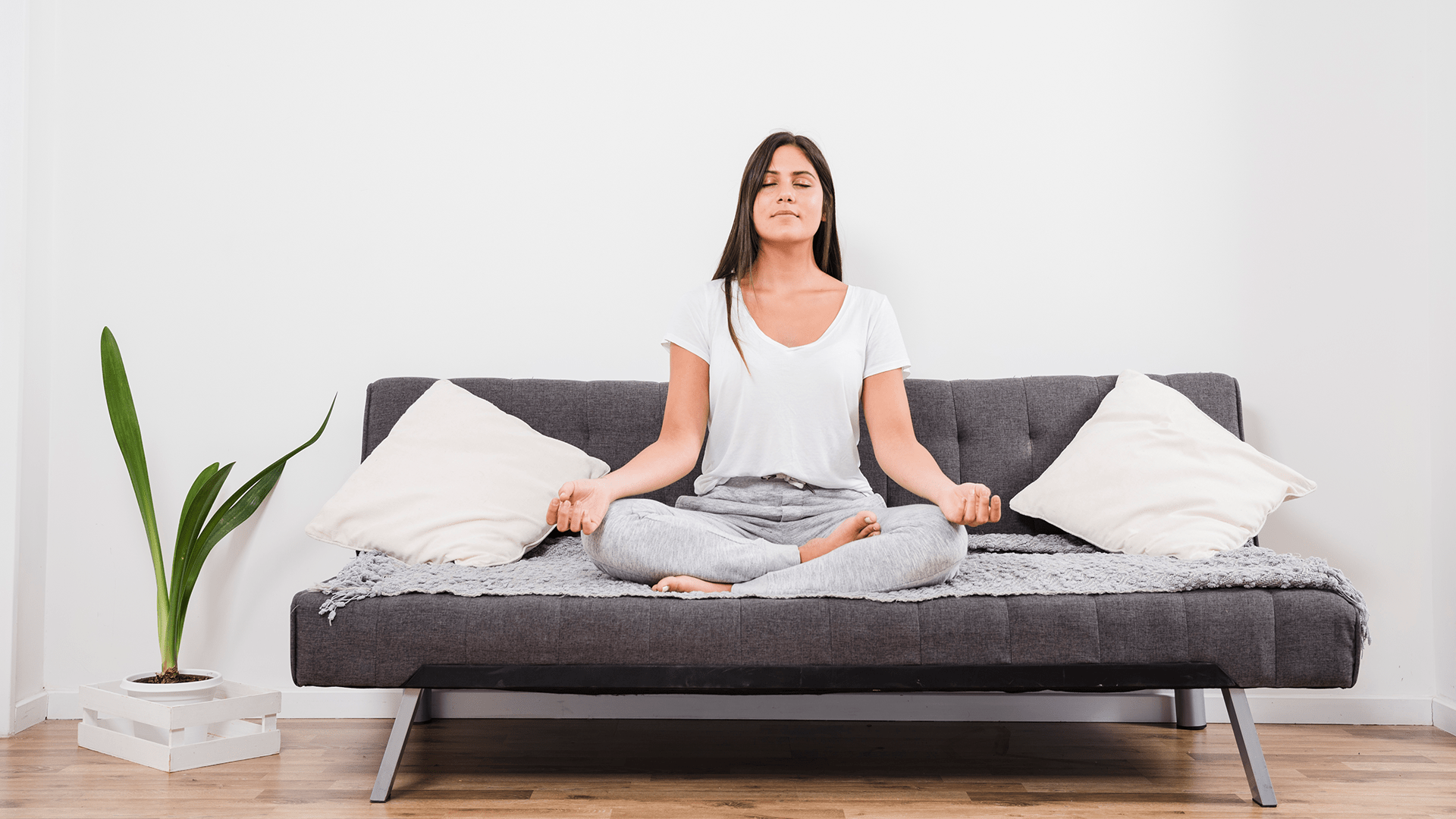
Meditation produces antidepressant effects, especially when practiced regularly over time. Meditation releases calming hormones, suppresses stress hormones, and stimulates the pineal gland. Meditation stimulates the parts of the brain that increase feelings of happiness and decreases activity in the parts of the brain associated with stress, making meditation an excellent antidote for SAD.
Gurudev Sri Sri Ravi Shankar says, “You are starving for a smile from yourself! Perhaps the only candle we need to light is for ourselves!” He points out that even a single lit candle can light others. Meditation is residing in your own heart, lighting a candle for yourself, and accepting and honoring your own friend request!
Find some wonderful guided meditation tracks here.
Other remedies to beat the winter blues
Whether you experience SAD or a mild case of the blues, the lack of sunlight and less time spent outdoors during the winter months can make anyone feel down. Luckily, there are many natural ways to remedy feelings of low energy in the wintertime. If you are prone to the wintertime blues, consider arming your mood with these tips:
1. Exercise
Exercise is one of the best ways to elevate mood, as exercise provides a natural rush of serotonin and endorphins, which are often lacking in the winter due to lack of sunlight and time outdoors. Exercise also increases blood flow in the body, making tolerating cold temperatures easier. Summoning the initial motivation to exercise can be the biggest challenge, so find yourself an exercise buddy to hold you accountable and remind you of the importance of exercise. Exercise is nature’s antidepressant!
2. Go outside
Going outside in the cold is one of the last things most people want to do in the winter (unless you love to ski!). However, getting outside can provide an instant lift in spirits, even if the sun is not out. Fresh air and natural light are essential for mental health. If possible, schedule time for walking outdoors everyday. Not only will walking increase your energy and exposure to the healthy benefits of fresh air, but routinely getting outside will help you stay connected to nature and will help you grow to appreciate the changing seasons.
3. Increase your Vitamin D
Low Vitamin D levels are common for people living in areas with low sun exposure, especially in the wintertime. Ask your doctor to test your D levels to find out whether supplementing with the vitamin is a healthy idea for you.
Join our virtual yoga studio
If you find yourself feeling down, give your body a re-charge with these daily practices and yoga asanas! If the cold prevents you from going out, and if you are looking for some activity that you can do in the house, try a yoga class on our online yoga studio.


